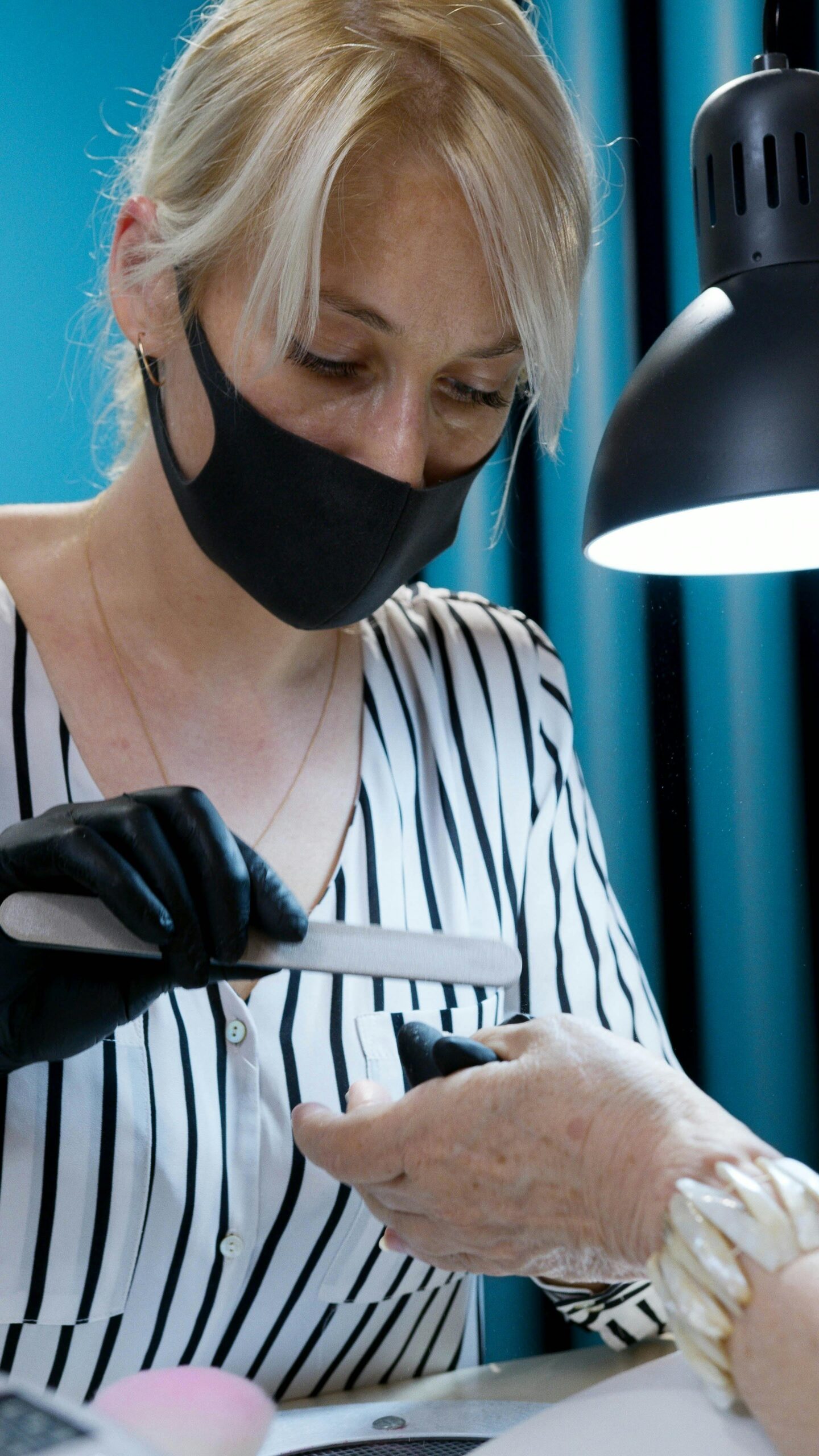BEAUTY
Factors That Affect the Cost of Your Blepharoplasty Procedure

Eyelid surgery, or blepharoplasty, has become increasingly popular as people aim to improve their appearance or enhance their vision quality. The cost can vary significantly due to various factors. Understanding these aspects can empower individuals to make well-informed choices about their cosmetic surgery journey.
Surgeon’s Expertise and Reputation
The cost for blepharoplasty can vary based on the skill level of the surgeon performing the procedure. Surgeons with extensive training and experience typically charge more for their services. Additionally, a surgeon’s reputation and history of successful surgeries can influence the cost, as patients may be willing to pay a premium for a surgeon known for delivering guaranteed outcomes and ensuring safety.
Geographic Location
The location of the surgery also affects the costs involved. Cities or areas with a higher cost of living usually have higher surgical fees compared to rural areas. This difference is due to expenses such as facility charges and staff salaries, which are generally higher in urban regions.
Type of Blepharoplasty
The cost can differ based on the type of procedure chosen. Whether it’s upper eyelid surgery, lower eyelid surgery, or a combination of both will have varying price points. The complexity of the surgery and the time it takes to perform it will also affect the overall cost. It’s advisable for individuals to discuss with their surgeon to determine which procedure aligns best with their needs and financial constraints.
Facility Fees
The cost of blepharoplasty can also be influenced by facility fees, which cover expenses related to the setting, including operating room charges, anesthesia costs, and medical equipment fees. Top-notch facilities with advanced technology and trained staff tend to charge higher rates in exchange for superior quality of care. When assessing these fees, patients should consider the facility’s reputation and the standard of care offered.
Pre-operative and Post-operative Care
Expenses related to care before and after surgery can also impact the total cost. A brief discussion with healthcare providers and laboratory examinations are part of the initial costs. Subsequent visits may add to the bill. Furthermore, follow-up care—such as medications, dressings, and potential adjustments—should be considered when planning financially. Comprehensive care strategies often bring comfort and assurance during the healing process.
Anesthesia Fees
The cost of surgery can also be affected by anesthesia expenses. The choice between general anesthesia and local anesthesia can significantly influence the price. Generally, general anesthesia carries a higher cost. The expertise and experience of the anesthesiologist may also play a role in determining the cost, as seasoned professionals might charge more for their services.
Extent of Correction Required
The cost of surgery can vary depending on the level of correction needed for each patient’s situation. Patients requiring additional adjustments, such as fat removal or skin tightening, may incur higher costs associated with the procedure. Discussing specific needs with the surgeon will provide clarity on the necessary corrections and assist patients in budgeting effectively for their treatment.
Insurance Coverage
Sometimes, insurance may help cover the costs of blepharoplasty and the accompanying range of services if it’s performed to improve vision problems rather than for cosmetic reasons. However, it’s important for patients to verify coverage details with their insurance company beforehand, as cosmetic surgeries are typically not included in standard policies and may require out-of-pocket payments.
Financing Options
For those concerned about the cost of surgery, exploring financing options can alleviate some anxiety regarding expenses. Many medical facilities offer installment plans or collaborate with financial institutions to provide patients with flexible payment methods. Patients are advised to inquire about these options during their initial consultation to make a well-informed decision on managing costs.
Conclusion
Understanding the factors that impact the costs of blepharoplasty allows individuals to make informed decisions about their surgical plans. Considering aspects such as the surgeon’s skill, the location of the clinic, the type of procedure, facility charges, and post-operative support can help patients better prepare financially for their surgery. Thorough research and clear communication with experts are essential for a fulfilling surgical journey.
BEAUTY
How to have a romantic wedding ceremony in Los Angeles

A wedding in Los Angeles is a dream for many couples, a romantic event that can be arranged in a city offering many possibilities, from a choice of beautiful locations with ocean views, the city, or the mountains to simply cozy little wedding chapels in Los Angeles, where you can create an intimate atmosphere for an unforgettable wedding ceremony.
Contact Lucky Wedding Day Chapel, and you are guaranteed to make your wedding day special. Here, you can think through all the details and create the perfect atmosphere with decorations, musical accompaniment, and a florist. The secret to a romantic wedding ceremony lies primarily in choosing the right location, the place that is right for you. It is not necessary to choose large luxurious halls; you can opt for a small wedding chapel where you can customize everything to suit your chosen wedding concept.
Wedding Chapel Los Angeles
The city offers small wedding chapels with classic interiors or modern halls with minimalist designs, so you can choose based on your taste and preferences. Outdoor locations are also very popular for wedding ceremonies, offering you and your guests beautiful views of the ocean or, if you prefer, the mountains and cityscapes. Each location allows you to create a special atmosphere and adapt it to your individual desires. By contacting Lucky Wedding Day Chapel, you can count on an individual approach and a cozy wedding ceremony where everything will be done just the way you want it. Small decorative elements, string music—you can choose everything based on your wishes.
Special attention should be paid to the musical accompaniment, because if it is chosen correctly, it will set the mood for the entire wedding ceremony. The songs for the first dance or the background music at the moment when you say “I do” will remain in your memory forever, and this emotional moment will stay with you throughout your marriage.Not only music, but also the work of a photographer is important, as well as flower decorations and other details. All these moments and your wishes for organizing a wedding can be realized at Lucky Wedding Day, which will offer you a beautiful and atmospheric chapel wedding ceremony in Los Angeles depending on your wishes, for a small circle of guests, or just for the two of you. Lucky Wedding Day Chapel has everything you need for the perfect wedding ceremony.
BEAUTY
Celestial Skin: Traces of Light and Lasting Grace

Beauty, much like the cosmos, is not defined by speed but by rhythm. While modern culture urges immediacy—instant solutions, quick treatments, overnight miracles—the skin resists such commands. It evolves through cycles, responding not to pressure but to patience. Just as stars form slowly in distant galaxies, each act of self-care builds quietly until the result becomes undeniable. In this journey, the orbit of beauty is not a straight line but a continuous path circling through time, where discipline and consistency are the forces that hold everything together.
Across history, cultures revered beauty as something sacred rather than superficial. In ancient temples, minerals were ground into powders to protect and adorn; in royal courts, oils infused with herbs preserved vitality. None of these practices promised immediacy—they reflected respect for balance. Modern skincare, despite its technology and packaging, tells the same truth: there is no shortcut to resilience. Every application is a signal to the body, a reminder that strength is built gradually. What matters most is not intensity but endurance, a principle as old as the heavens themselves.
Science today echoes this ancient wisdom. Skin cells renew in cycles of weeks, hydration requires daily replenishment, and environmental protection is cumulative. Quick results may create illusion, but deep change is written only through repetition. Think of it as layering light: one beam is weak, but thousands together illuminate a sky. Skincare works the same way. Every product used, every habit repeated adds to brightness, creating the spark that grows steadily into a visible presence.
The metaphors of culture remind us of the same principle. Stories rarely glorify sudden perfection; they celebrate arcs of growth. Heroes, artists, innovators—none arrive fully formed. They emerge through persistence. Beauty reflects this arc. It is not defined by a single mask, a single treatment, or a single choice, but by the thousands of repetitions that create identity. It is the story of patience written on the surface, a narrative that becomes stronger with every chapter.
Nature, as always, provides the purest lesson. Planets orbit steadily for millennia, oceans rise and fall with the moon, and forests grow layer upon layer after storms. None of this is immediate, but all of it is enduring. Skin follows the same law. Left to extremes, it falters; nurtured with care, it flourishes. The lesson is simple: beauty that endures is beauty in rhythm with time. When aligned with that rhythm, we embody the aura, a glow that is not manufactured but revealed—an elegance that transcends trend and becomes part of who we are.
What we learn is that beauty is celestial in nature—quiet, patient, luminous. It is not a finish line, but a constellation of choices that map our story. Each trace of light is a reflection of consistency. Each layer of care is a star in its own orbit. And together they form something vast, radiant, and unshakable: not just appearance, but grace that lasts beyond measure.
BEAUTY
Why Russian Manicure Is the New Beauty Standard in Austin

Nail trends in Austin are moving far beyond simple polish application. More women are asking for beauty services that are healthier, longer lasting, and more elegant. One service that is becoming extremely popular is the Russian e-file manicure. This technique, which originated in Europe, is now winning the hearts of beauty lovers in Texas because of its precision and long-term results.
Unlike a regular manicure where cuticles are clipped with scissors, the Russian method uses professional electric files with fine attachments. These tools allow a nail technician to clean the cuticle area with amazing accuracy, without damaging the skin or the nail plate. The surface becomes perfectly smooth and ready for gel application, which means polish adheres better and stays flawless much longer.
Many clients in Austin say that after trying this manicure once, they finally noticed the difference. Traditional manicures often cause small cuts or leave the nail uneven, which leads to chipping and early lifting of gel. With the Russian e-file manicure, the nail grows out cleanly, polish does not peel at the edges, and the overall look stays neat for weeks.
Another major advantage is safety. The e-file technique allows careful removal of only dead cuticle tissue, so the living skin remains healthy and protected. This reduces the risk of irritation and keeps nails stronger. It is a gentle approach that provides a professional finish while maintaining natural nail health.
The service is also perfect for women with busy schedules. In Austin, where many clients are professionals balancing work, family, and social life, it is important to have a manicure that lasts. With proper preparation, gel polish can stay intact for three to four weeks, saving both time and effort.
When it comes to style, the Russian e-file manicure offers endless possibilities. Because the base is prepared so thoroughly, any type of design looks better — from natural nude shades to bold colors or intricate nail art. Brides, influencers, and businesswomen alike appreciate how polished and sophisticated this technique looks in every situation.
If you are searching for the best place to try a Russian e-file manicure, visit ICON Beauty Clinic. The salon is known in Austin for combining advanced European methods with top safety standards. Every treatment is performed with sterile tools, professional products, and a high level of detail. The result is nails that are elegant, durable, and comfortable to wear.
Clients who experience the service often say they cannot go back to regular manicures. The difference in quality, appearance, and durability is clear. The Russian manicure is not just a beauty trend — it is a smarter, healthier way to care for nails.
As Austin continues to embrace international beauty innovations, this technique is setting new standards. Women who choose the Russian e-file manicure invest not only in beauty, but also in confidence and convenience.

 BUSINESS10 months ago
BUSINESS10 months agoBrand Visibility with Imprint Now and Custom Poly Mailers

 TECHNOLOGY8 months ago
TECHNOLOGY8 months agoDizipal 608: The Tech Revolution Redefined

 HEALTH9 months ago
HEALTH9 months agoHappy Hippo Kratom Reviews: Read Before You Buy!

 BUSINESS11 months ago
BUSINESS11 months agoExploring the Benefits of Commercial Printing

 HEALTH6 months ago
HEALTH6 months agoYour Guide to Shedding Pounds in the Digital Age

 HOME IMPROVEMENT10 months ago
HOME IMPROVEMENT10 months agoThe Do’s and Don’ts of Renting Rubbish Bins for Your Next Renovation

 HEALTH6 months ago
HEALTH6 months agoThe Surprising Benefits of Weight Loss Peptides You Need to Know

 LIFESTYLE10 months ago
LIFESTYLE10 months agoThe Disciplinary Wives Club: Spanking for Love, Not Punishment












